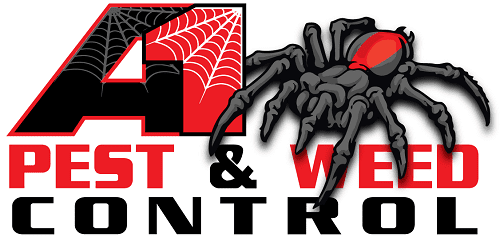We service all commercial properties such as factories, schools, universities, commercial offices and warehouses, commercial kitchens, agriculture, restaurants, hospitals, offices, large residential complexes, construction, Strata property management solutions and much more.
Contact us today for a free consultation about our pest control services in Melbourne. We’ll walk you through our services, and answer any questions you have about our professional and elite company.



- Manufacturing & Logistics
- Offices
- Pharmaceuticals
- Public Housing & Retirement Homes
- Construction
- Education & Child Care
- End of Lease Pest Control
- Large Residential Complexes
- Sport, Fitness & Recreation
- Health & Aged Care
- Hospitality
- Local Governments
- Transport
- Real Estate
- Retail & Wholesale
- Strata Property Management
- Tourism
Read More
How can pests be snared from the products that are stored?
Pests can infiltrate storage products due to cross-contamination or poor hygiene practices. Since they can fly and crawl and fly, it’s easy for them to relocate to new areas. They can also reproduce quickly and cause outbreaks if pests’ populations are not controlled immediately after they are spotted.
What can I do to prevent stored product pests?
It is adopting a multi-faceted approach to prevent the spread of pests to stored products. It is recommended to store products in tightly sealed containers that are free of crevices or cracks. Keep your food items off the floor at a safe distance from the wall when possible. You should regularly inspect and keep track of your food storage. It would be best if you kept a high standard of hygiene and sanitation standards. Also, you must ensure that you safely use chemicals when needed to avoid spreading disease.
What treatment options are available to deal with pests stored in products?
To deal with bugs in food, there are two choices. One option is to destroy and remove the food items, which can be extremely expensive. The other alternative is to treat food items to ensure the food is safe to eat while also getting rid of the insects.
Pests that are stored in products of various types within Melbourne and Victoria
INDIAN MEAL MOTH (PANTRY MOTH)
APPEARANCE
They can span from 14 to 20 millimetres. The wings of these birds are pale fawns in colour, and the outside portions of their forewings are brownish red. The larvae of their species are enormous, with a length of up to 17mm. They’re off-white but can be coloured depending on the food they eat. The head capsules of their heads are dark, and they’ve got three legs plus prolegs.
LIFESTYLE
Their lifespan is one up to two months. Adults live for a short time, less than two weeks. They do not feed. Females make 200 eggs in food items, and the larvae feed off that food. Larvae cover food items with webbing before pupating within the food or next to it.
HABITS
They are frequent pests found in both the commercial and the home. These larvae feed on chocolate, flour cereals, biscuits, grains, dried fruit, pet food, nuts and rodent baits made from grains.
ANGOUMOIS GRAIN MOTH
APPEARANCE
The Angoumois grain moth has an average wingspan between 13 and 17mm. Their wings range from pale yellow to brown with a thick fringe and hairs with long lengths. Their hindwings have a pointed tip. The larvae of these species are six millimetres long and pale yellow with three legs and poor abdominal prolegs.
LIFESTYLE
They live for between 1 and 3 months. They experience diapause between 2 and 9 months.
HABITS
They lay eggs on the grain. Later, the larvae burrow into the grain.
RICE WEEVIL
APPEARANCE
Rice weevils range from 2.5 or 3.5mm long. They are brownish-red with four light spots. Their head is long and has thin and slender spout. Their larvae are white and legless, have dark heads, and can grow to 4 millimetres.
LIFESTYLE
They live a 4-to-6-week cycle. However, adults can last up to six months. Females drill holes into the grain before laying their eggs inside. Females can lay as many as 400 eggs.
HABITS
Being one of the most damaging storage product bugs, they attack grains. However, they may also consume pasta.
GRANARY WEEVILS
APPEARANCE
Granary weevils measure 2.5 to 4 millimetres long when adults. They range from dark brown to black and have elongated pits on their pronotum. They are long with thin nostrils. The larvae are tiny white, without legs, and have dark heads.
LIFESTYLE
Their lives span between 4 and 6 weeks. However, adults can live up to eight months. Females drill holes into grains and then lay their eggs.
HABITS
Adults aren’t allowed to fly. They prefer cooler temperatures. They eat grains, but they also consume nuts and beans.
LESSER GRAIN BORER
APPEARANCE
Lesser grain borers measure 2.5 to 3 millimetres long. They have cylindrical bodies that are reddish brown with heads that could be hidden beneath their teeth. They have antennae that are three segments. The larvae of these species are white, with a length of up to 3mm, with three pairs of tiny thoracic legs.
LIFESTYLE
The typical life cycle of a female is eight weeks long, and adults can live for up to two months. Females may lay up to 300 eggs. However, they’re not borers.
HABITS
They nest in grains. Adults can fly.
SAW-TOOTHED GRAIN BEETLE
APPEARANCE
The saw-toothed grain worm is three up to 3.5mm long. It is dark brown, slender and flattened by saw-tooth-like projections to either end of its thorax. The larvae can grow up to 4mm in size and are white, with three legs.
LIFESTYLE
They live a three-to-six-week cycle. However, adults can last as long as three years.
HABITS
They attack kernels and are usually an after-effect of another pest that has damaged stored grain. They are a common pest in food pantries. Females can lay up to 300 eggs inside broken cereals and broken grains. They eat cereals, grains, seeds, and other food items. Adults are active but aren’t flying.
RUST-RED FLOUR BEETLE
APPEARANCE
The beetles that are rust-red are about 3-4mm long. They are reddish-brown, with grooved wing covers and antennae, which end with a three-segmented club. The larvae of these species are 6 millimetres long, white, and have a black head and three legs.
LIFESTYLE
The life span of their children is between 4 and 8 weeks. Adults are between 15 and 21 months old.
HABITS
They attack weak kernels that are weak. They are prevalent in shops, farms, mills, homes, and stores. Females lay eggs on food items. They consume cereals, grains and seeds, stock feed nuts, dried fruits, chocolates, spices and many more. The adults are highly agile fliers.
CONFUSED FLOUR BEETLE
APPEARANCE
This confused beetle can be approximately 3 to 4 millimetres long. They resemble the red-rust flour beetle; instead of having a clubbed antenna, the antenna thickens toward the top. The larvae can grow as large as 5mm white with dark heads and three legs.
LIFESTYLE
The life span of a child is 4-8 weeks. Adults can live for up to 3 years.
HABITS
They are not able to fly. They attack weaker kernels and are present throughout the production and storage process. They consume a variety of different food items.
FLOUR MITE
APPEARANCE
Flour mites measure about .5mm and have clear white bodies and pinkish or yellowish legs.
LIFESTYLE
Their lifespan is between two to four weeks.
HABITS
They are fed by flour and other excellent products, but they require the relative humidity to be 70% or higher. They could cause dermatitis in those who are sensitive.
SPIDER BEETLE
APPEARANCE
There are three varieties of spider beetles. It is the Australian spider beetle that measures 2.5 to 4 millimetres long. They’re dark brown, with blonde hair covering their elytra. They sport pubescent wings, bulbs, bulbous bodies, and long eggs. Their larvae measure up to 4mm in size, curled and white, with three pairs of thoracic legs.
LIFESTYLE
They live for a three-to-12-month cycle.
HABITS
They attack food items that are decaying and grains, seeds and other organic materials, such as the carcasses of rodents and their droppings.
DRUGSTORE BEETLE
APPEARANCE
The beetle found in the drugstore is between 2 and 3.5mm long, with a reddish-brown colour with long rows of hairs along the elytra. They have three antennae segments at the tips. From the top, it’s difficult to observe their heads. The larvae are white, as large as 3.5mm, and curled grubs with three legs.
LIFESTYLE
They can live a 1-to-6-month cycle.
HABITS
They are pests of the pantry and eat a variety of food items, including fruit, flour, nuts and biscuits, spaghetti, dried animals, leather and even spices. Adults don’t feed.
CIGARETTE BEETLE/TOBACCO BEETLE
APPEARANCE
The cigarette beetle can be found approximately 2 to 3.5mm long. They’re light brown and oval with smooth pubescent elytra and serrate antennae. It’s hard to discern their heads from above. The larvae measure up to 4mm in size, white, curled grubs with two legs.
LIFESTYLE
Their lifespan is from 1-to-4 months.
HABITS
They can eat a variety of food sources. However, they are among the best food sources for tobacco. Adults eat the same food sources as larvae. They also eat seeds, grains, dried fruits and veggies and biscuits, spices, nuts, dried animals, fish meat, fish, and many more.













